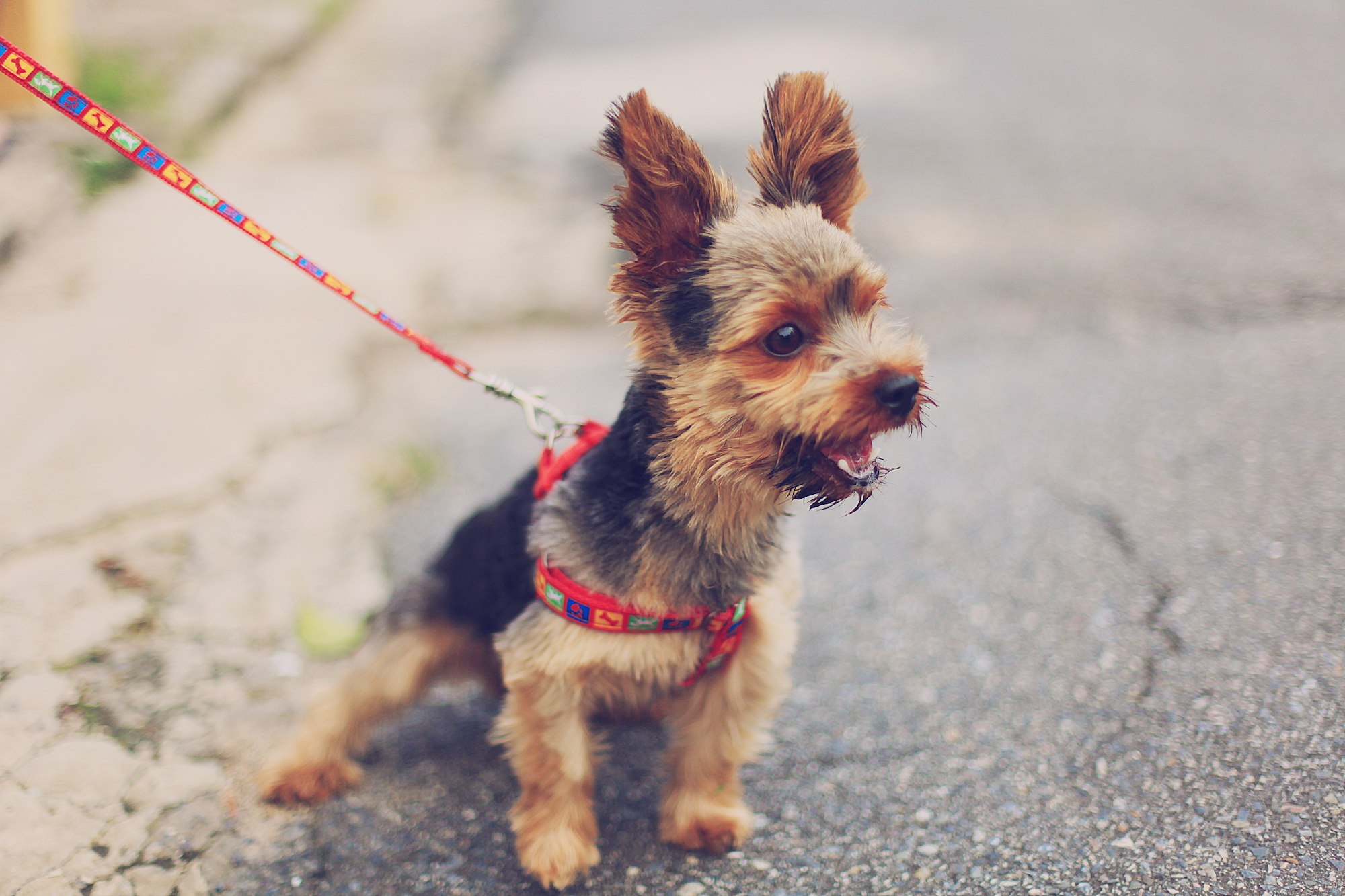Dogs exhibit various behaviors to communicate and express themselves, and one common behavior that you may have noticed is licking. Licking is a natural behavior for dogs and serves several purposes in their social interactions. When it comes to dogs licking each other, there are a few key reasons behind this behavior.
Understanding the Importance of the Fi Dog Collar for Monitoring Canine Behavior
Dogs licking each other's faces is a common and fascinating behavior, often reflecting their social bonds, grooming instincts, or ways of showing respect. However, keeping an eye on excessive licking is crucial to ensuring your dog's health and well-being.
The Fi Dog Collar offers an intelligent solution for proactive pet care, aligning perfectly with the article's focus on understanding canine behavior. With features like advanced GPS tracking, activity monitoring, and geofencing available through the Fi app, the Fi Dog Collar ensures you can always keep track of your furry friends and their interactions. Try the Fi Dog Collar today to experience peace of mind, knowing your pet is safe and sound!

Why Do Dogs Lick Each Other?
When it comes to dogs, there's a fascinating behavior that often leaves us puzzled - why do they lick each other? In this exploration, we'll uncover the reasons behind this canine ritual. From social bonding to grooming behavior and acts of submission and respect, we'll delve into the different sub-sections that shed light on this intriguing behavior.
Social Bonding
Social bonding is an essential aspect of a dog's behavior. Dogs naturally form social connections with others, including humans and other dogs, through various behaviors.
- Sniffing: Dogs use their sense of smell to gather information about each other, sniffing the face, body, and rear end. This behavior helps them recognize and remember other dogs.
- Play: Playful interactions, such as chasing, wrestling, and playful biting, are important for dogs to establish and strengthen social bonds. It helps them communicate, build trust, and develop social skills.
- Body Language: Dogs use body language signals, such as wagging tails, relaxed posture, and play bows, to signal friendliness and build rapport with other dogs. This non-verbal communication helps dogs understand each other's intentions and emotions.
- Shared Activities: Engaging in activities together, such as walking, running, or playing fetch, can strengthen the bond between dogs. It provides shared experiences and enhances their social connection.
- Emotional Support: Dogs offer emotional support to each other through physical contact, such as leaning against each other or lying close together. This physical closeness helps dogs feel secure and reinforces the social bond.
Social bonding plays a crucial role in a dog's well-being and overall social development. It enhances their sense of belonging and provides them with companionship and support.

Grooming Behavior
Grooming behavior is a common activity among dogs, serving multiple purposes in their social interactions. Dogs engage in grooming behavior to maintain hygiene and to establish social bonds with other dogs. Here are some key aspects of grooming behavior:
- Licking: Dogs use their tongues to engage in grooming behavior. This licking helps to clean their fur, remove dirt, and keep their skin healthy.
- Coat maintenance: Grooming behavior involves dogs using their tongues to groom each other's coats, removing loose hair, debris, and parasites, such as fleas or ticks. This action keeps the coat clean and free from any irritants.
- Social bonding: Grooming behavior strengthens social bonds among dogs. When dogs groom each other, it promotes trust, cooperation, and bonding within their social group.
- Communication: Grooming behavior serves as a form of nonverbal communication between dogs. It allows them to express trust, submission, and affection towards one another.
- Stress relief: Grooming behavior can help dogs relax and relieve stress. It has a calming effect on both the groomer and the dog being groomed, promoting a sense of well-being.
Pro-tip: If your dogs engage in excessive licking or grooming behavior, it's important to monitor their behavior. While some licking is normal, excessive grooming can be a sign of underlying health issues or stress. Consulting with a veterinarian can help determine if there are any underlying concerns that need to be addressed.
Submission and Respect
When it comes to dog behavior, submission and respect play a crucial role. Licking is a natural way for dogs to express submission and respect towards each other. Here are some key points to understand about submission and respect in dog behavior:
- Submissive gestures: Licking is often seen as a submissive gesture in dogs. It is a way for one dog to show deference and respect towards another. They may lick the other dog's face, paws, or body as a sign of submission and respect.
- Establishing hierarchy: Licking can also serve as a way for dogs to establish their place in the hierarchy. By licking a more dominant dog, the submissive dog acknowledges their higher rank and displays respect.
- Maintaining social harmony: Through licking, dogs can maintain social harmony within their pack. It helps to prevent conflicts and promotes cooperation among group members.
Understanding submission and respect in dog behavior is important for dog owners to ensure a balanced and harmonious relationship between their dogs. By recognizing the significance of licking and the messages it conveys, owners can better manage their dogs' interactions and provide a supportive environment for them.
In ancient times, dog packs relied on clear social structures and hierarchy to maintain order and cooperation. Submission and respect were essential for the smooth functioning of the pack. Licking emerged as a non-confrontational way for dogs to express submission and show respect to more dominant members. This behavior helped establish a sense of unity and allowed the pack to work together effectively, ensuring their survival and success in the wild. Even today, these instincts and behaviors are deeply ingrained in our domesticated dogs. Understanding the significance of submission and respect can help us navigate and support our dogs' social interactions.
When Does Excessive Licking Become a Concern?
When it comes to our furry friends, a bit of face licking is all part of the canine camaraderie. But what happens when it goes from an innocent gesture to excessive licking? In this section, we'll dive into the reasons behind this behavior and explore two key aspects: possible underlying health issues and social anxiety or stress. Get ready to uncover the clues behind your dog's excessive licking habits and learn when it's time to be concerned.
Possible Underlying Health Issues
Excessive licking between dogs can sometimes indicate possible underlying health issues that need to be addressed. It's important to observe and monitor their behavior to determine if there might be possible underlying health issues. Here are some possible health issues to consider:
- Allergies: Dogs can develop allergies to certain foods, environmental allergens, or even flea bites. Excessive licking can be a sign of itching and discomfort caused by possible underlying health issues.
- Skin Infections: Bacterial or fungal infections can lead to irritation and itching, prompting dogs to lick excessively. Skin infections may be accompanied by redness, swelling, or a foul odor related to possible underlying health issues.
- Pain or Injury: Dogs may lick a specific area if they are experiencing pain or discomfort related to possible underlying health issues. It could be a sign of joint pain, muscle strain, or even an injury that needs medical attention.
- Digestive Problems: Gastrointestinal issues, such as stomach ulcers or gastritis, can cause dogs to lick excessively as a way to soothe their discomfort. Vomiting or diarrhea may also accompany these digestive problems related to possible underlying health issues.
- Anxiety or Stress: In some cases, excessive licking can be a manifestation of anxiety or stress related to possible underlying health issues. Dogs may resort to licking as a coping mechanism, similar to humans biting their nails or fidgeting.
If you notice persistent excessive licking or accompanying symptoms, it is important to consult a veterinarian. They can conduct a thorough examination, perform necessary tests, and provide appropriate treatment to address any possible underlying health issues.
True story: My two dogs were constantly licking each other's paws excessively. Concerned about possible underlying health issues, I took them to the vet. It turned out that they both had developed allergies to a specific ingredient in their food. With a change in diet and prescribed medication, their excessive licking gradually subsided, and they became much more comfortable. It was a relief to have identified the possible underlying health issue and to see my dogs happier and healthier.
Social Anxiety or Stress
Social anxiety or stress is a common factor that can contribute to dogs engaging in excessive licking behavior. When dogs experience feelings of anxiety or stress, they may resort to licking as a means of self-soothing or as a coping mechanism. This licking behavior can be triggered by various factors, including loud noises, unfamiliar environments, separation from their owners, or interactions with other dogs that they perceive as threatening.
Excessive licking resulting from social anxiety or stress can have detrimental effects on a dog's overall well-being. It can lead to skin irritations, infections, or even the development of compulsive behaviors. If left unaddressed, this excessive licking can also intensify the dog's anxiousness or stress levels, creating a cycle of anxious licking.
To effectively manage and address excessive licking caused by social anxiety or stress, it is crucial to identify and target the underlying triggers. Creating a calm and secure environment for the dog can help reduce anxiety levels. Additionally, employing positive reinforcement and reward-based training methods can aid in alleviating both stress and anxiety. Engaging the dog in activities that promote mental and physical stimulation, such as interactive toys or puzzle games, can redirect their focus and minimize anxious behaviors.
Close monitoring of the dog's behavior and timely intervention are essential in effectively managing excessive licking. Should the behavior persist or worsen despite interventions, it is recommended to seek guidance from a professional dog behaviorist or veterinarian to explore additional strategies or potential underlying medical issues contributing to the anxiety or stress.

How to Manage Excessive Licking Between Dogs
Are your dogs engaging in a saliva-filled love affair, constantly licking each other's faces? Don't worry, it's actually quite common and can be managed! In this section, we'll explore effective strategies to handle excessive licking between dogs. From training and socialization to providing ample mental and physical stimulation, we've got you covered. And of course, we'll also discuss the importance of monitoring their interactions and intervening when necessary. Get ready to bring some balance and harmony back to your pup's licking habits!
Training and Socialization
Training and socialization are essential factors in effectively managing excessive licking between dogs. It is important to keep the following considerations in mind:
1. Begin training and socialization early: Initiate these processes from a young age to establish positive behavior and promote constructive interactions with other dogs.
2. Utilize positive reinforcement: During training sessions, use rewards and praise to reinforce desired behaviors. This method helps dogs associate positive outcomes with good behavior.
3. Gradually introduce dogs to new environments, people, and animals: Controlled and supervised interactions are crucial for ensuring a positive experience for both dogs. Start with gradual introductions to help them acclimate.
4. Implement obedience training: Teach dogs basic commands like sit, stay, and come to redirect their attention away from excessive licking and encourage more appropriate behavior.
5. Foster socialization with various dogs: Expose dogs to different breeds, sizes, and temperaments to improve their social skills. This can be achieved through supervised playdates or visits to dog parks.
6. Train dogs to walk calmly on a leash: Leash training helps maintain control and prevents aggressive or overly excited behavior, which can contribute to excessive licking.
7. Consistency and repetition are key: Regular training sessions and reinforcing commands are vital for dogs to understand and follow behavioral expectations.
8. Seek professional help if necessary: If you encounter difficulties managing excessive licking or any other behavioral issues, consider consulting a professional dog trainer or behaviorist for guidance and assistance.
By prioritizing training and socialization, you can cultivate a well-behaved dog that engages in appropriate behavior with other dogs, ultimately reducing the likelihood of excessive licking.
Provide Sufficient Mental and Physical Stimulation
It is crucial to provide sufficient mental and physical stimulation to ensure that dogs lead balanced and healthy lives. Here are some natural ways to incorporate this stimulation for your dogs:
- Engage in regular exercise: To maintain your dog's physical fitness and burn off excess energy, make sure to include daily walks, runs, or play sessions. The duration of exercise should be around 30 minutes to an hour based on your dog's breed and energy level.
- Offer interactive toys and puzzles: Mental stimulation is equally important as physical exercise. Make sure to provide toys that require problem-solving skills or food puzzle toys that encourage your dogs to work for their treats. This will help keep their minds sharp and engaged.
- Change up their environments: Introduce your dogs to new environments regularly by taking them to different parks or walking routes. This exposure to new sights, smells, and sounds will provide them with mental stimulation and prevent boredom.
- Practice obedience training: Engage your dogs' minds by incorporating training sessions. This not only teaches them important commands but also mentally stimulates them. You can teach them new tricks, practice basic obedience, or include fun games like hide-and-seek or fetch.
- Arrange playdates: Set up playdates with well-behaved and vaccinated dogs to provide your pets with opportunities for socialization and play. These interactions with other dogs can be mentally stimulating for them.
- Rotate toys and activities: To keep your dogs interested and challenged, regularly rotate their toys and activities. Introduce new toys or switch up old ones to maintain their curiosity and prevent boredom.
By incorporating these methods of providing sufficient mental and physical stimulation, you can ensure that your dogs are happy, healthy, and well-balanced companions.
Monitor and Intervene When Necessary
When managing excessive licking between dogs, it is crucial to carefully observe and intervene whenever necessary to ensure the well-being of both dogs and maintain a harmonious environment.
- Monitor body language: Give careful attention to the body language of both dogs engaged in the licking behavior. Indicators of discomfort or tension, such as rigid postures, growling, or raised hackles, should alert you to the need for intervention.
- Step in and interrupt inappropriate behavior: When one dog persistently licks another in an uncomfortable or intrusive manner, take immediate action to redirect their focus. Use a gentle command or a distraction technique to redirect their attention towards a suitable activity.
- Temporarily separate the dogs: If the licking behavior continues despite your efforts to intervene, it may be necessary to separate the dogs for a short period. This can help break the cycle of the behavior and allow both dogs to calm down.
- Seek professional assistance if required: If the excessive licking behavior persists or worsens, it is advisable to consult a professional dog trainer or behaviorist. They can offer guidance and personalized strategies to address the underlying causes of the behavior.
Some Facts About Why Does My Dog Lick My Other Dog's Face?
- ✅ Dogs licking each other's faces is a common behavior rooted in their puppy stage.
- ✅ There are three main reasons why dogs lick other dogs' faces: hunger pains, soliciting attention, and as a sign of respect.
- ✅ Licking another dog's face is a way for puppies to communicate their hunger.
- ✅ Dogs lick each other's faces to seek attention and care, a behavior rooted in their puppyhood.
- ✅ Licking another dog's face is a submissive behavior that shows respect, similar to saying "please" or acknowledging a superior.
Frequently Asked Questions
Why does my dog lick my other dog's face?
Dogs lick each other's faces for various reasons, including subordinate behavior, showing affection, or as a sign of respect.
What does it mean if my dog's face is raw and sore from being licked by another dog?
If your dog's face is raw and sore from being licked by another dog, it could indicate that the licking behavior has become obsessive or that there are underlying physical issues such as allergies or dry skin. It is essential to consult with a veterinarian to address any potential medical concerns.
Is it socially awkward for dogs to lick each other's faces?
No, licking each other's faces is a normal behavior for dogs, especially in social group animals like dogs. It is a way for them to bond, show affection, and communicate with one another.
Can dog licking be an obsessive habit?
Yes, dog licking can become an obsessive habit. It may indicate anxiety or obsessive-compulsive disorder (OCD). If your dog's licking becomes excessive or interferes with their daily life, it is important to seek veterinary advice for proper evaluation and treatment.
Why do puppies lick their mother's face?
Puppies lick their mother's face to indicate hunger pains. This behavior is biologically programmed and originates from their wild ancestors, as it is a way for them to communicate their need for food.
Do dogs lick each other's faces to regurgitate food like wolves?
No, dogs do not lick each other's faces to regurgitate food like wolves. While wolf puppies use this behavior, domesticated dogs do not typically engage in regurgitation as a means of feeding their young.






